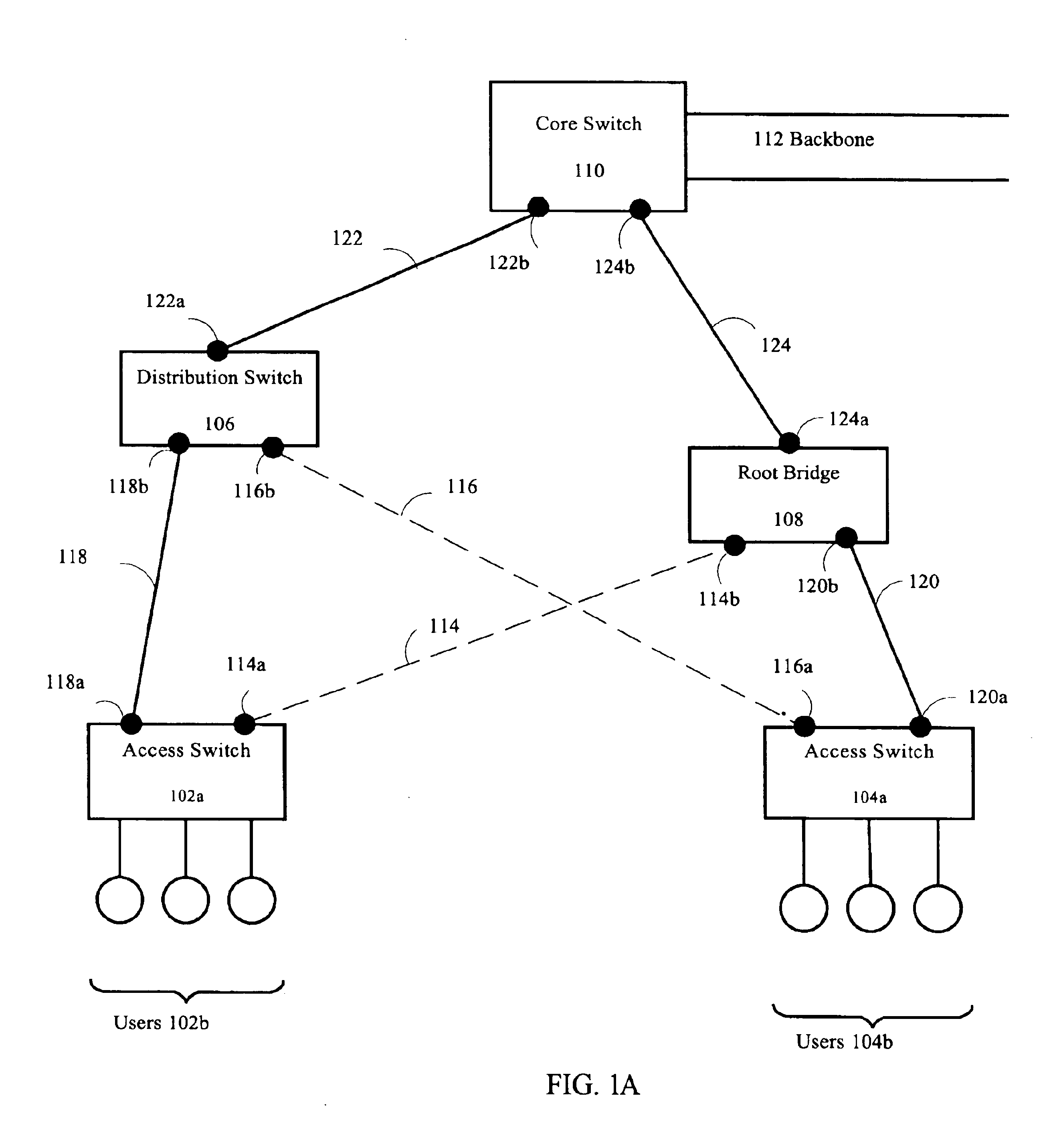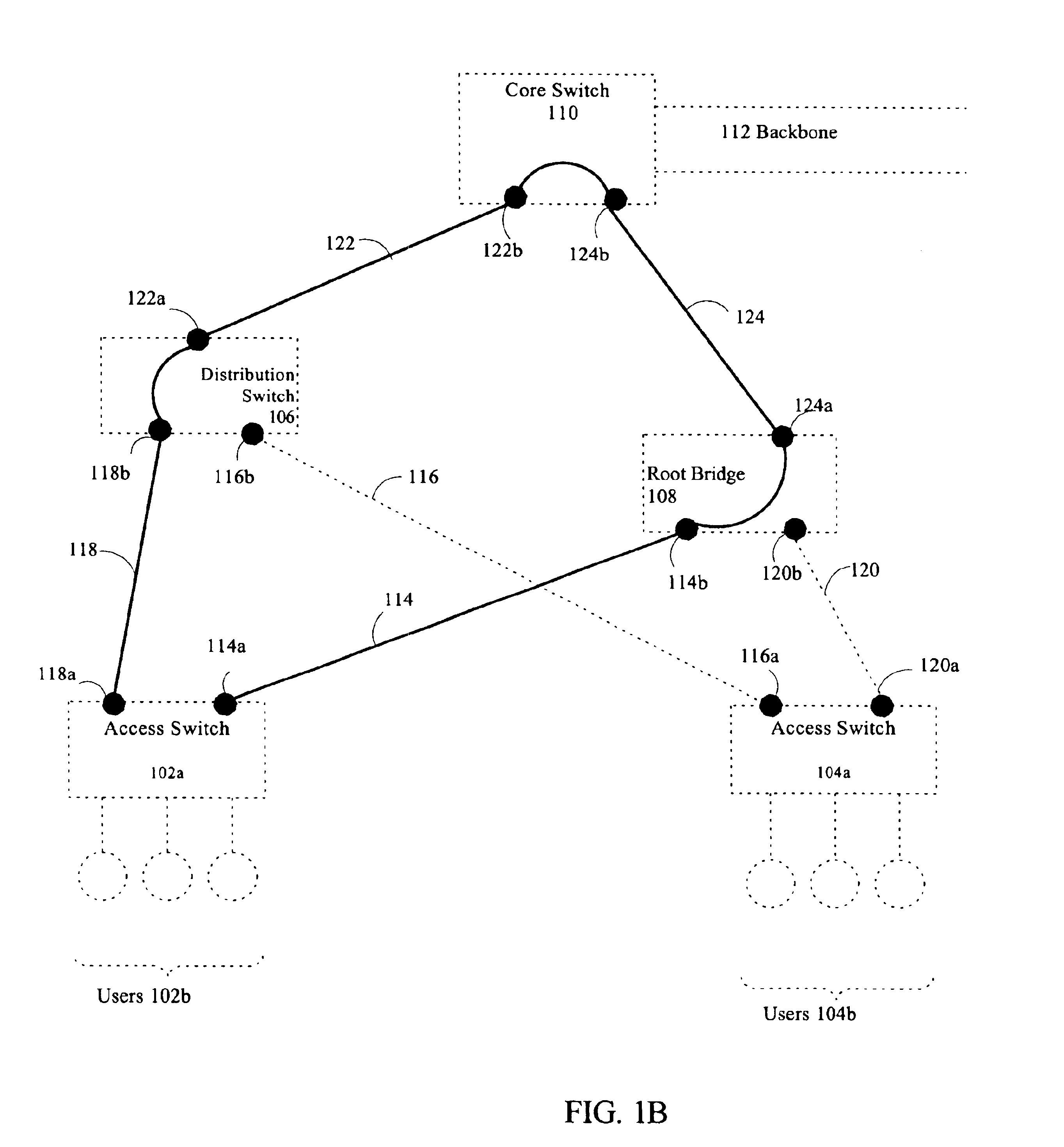Method and apparatus for determining a layer 2 path in a switched network
a switched network and path technology, applied in the field of computer network management, can solve problems such as insufficient knowledge of the physical topology of the network to diagnose an error in the network, insufficient information obtained from ip path tracing performed at layer b>3/b>, and change in characteristics of many network devices
- Summary
- Abstract
- Description
- Claims
- Application Information
AI Technical Summary
Benefits of technology
Problems solved by technology
Method used
Image
Examples
Embodiment Construction
[0043]A method and apparatus for determining a Layer 2 path between two or more nodes in a switched network is disclosed herein. In the following description, for the purposes of explanation, numerous specific details are set forth in order to provide a thorough understanding of the present invention. It will be apparent, however, to one skilled in the art that the present invention may be practiced without these specific details. In other instances, well-known structures and devices are shown in block diagram form in order to avoid unnecessarily obscuring the present invention.
Overview
[0044]For purposes of illustration, the invention is described in the context of Internet Protocol (“IP”) network addressing. The IP standard specifies that each host is assigned a unique 32-bit number known as the host's IP address, which is used for all communication with the host. Each packet sent across an IP network contains the 32-bit IP addresses of the sender (source) as well as the intended r...
PUM
 Login to View More
Login to View More Abstract
Description
Claims
Application Information
 Login to View More
Login to View More - R&D
- Intellectual Property
- Life Sciences
- Materials
- Tech Scout
- Unparalleled Data Quality
- Higher Quality Content
- 60% Fewer Hallucinations
Browse by: Latest US Patents, China's latest patents, Technical Efficacy Thesaurus, Application Domain, Technology Topic, Popular Technical Reports.
© 2025 PatSnap. All rights reserved.Legal|Privacy policy|Modern Slavery Act Transparency Statement|Sitemap|About US| Contact US: help@patsnap.com



